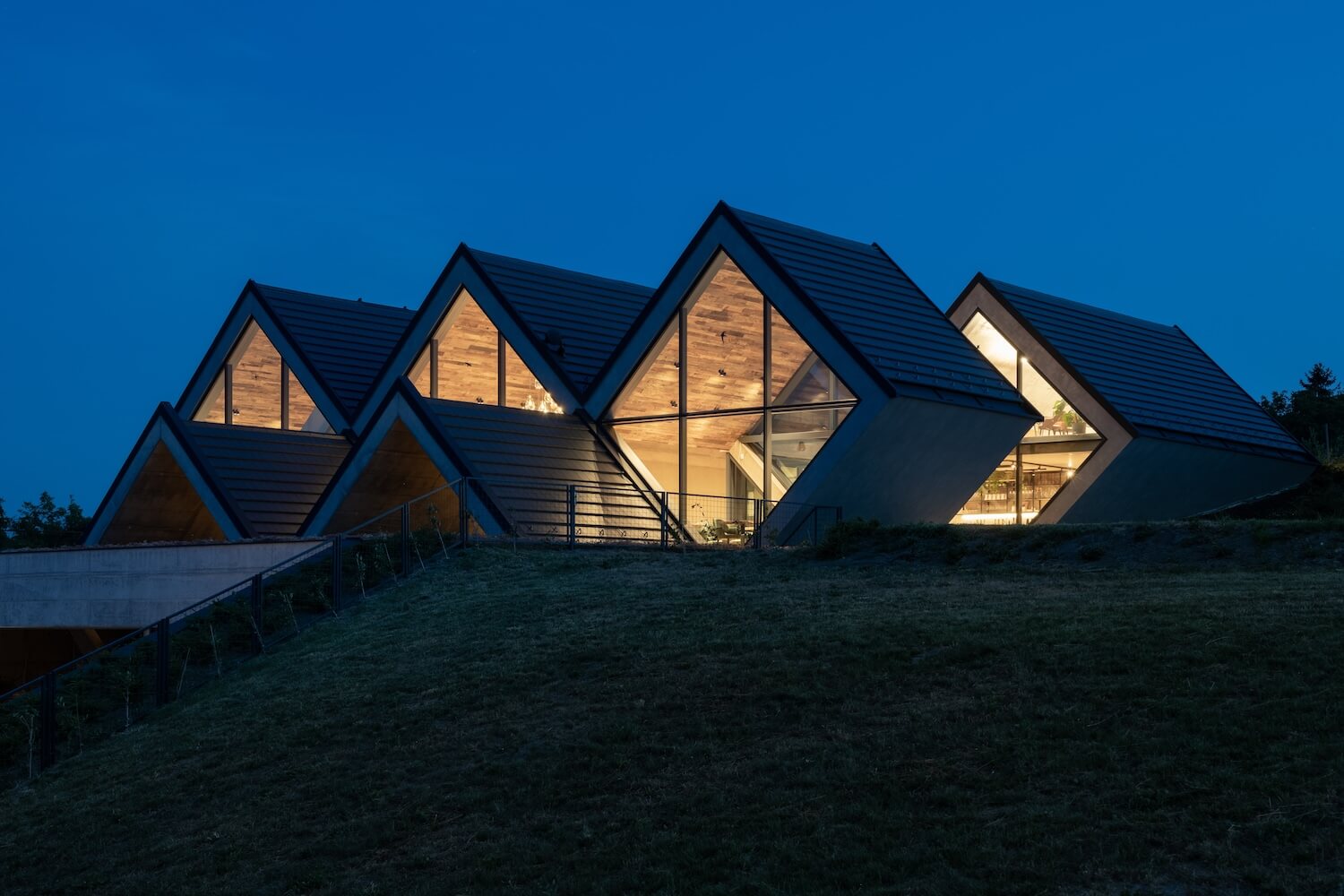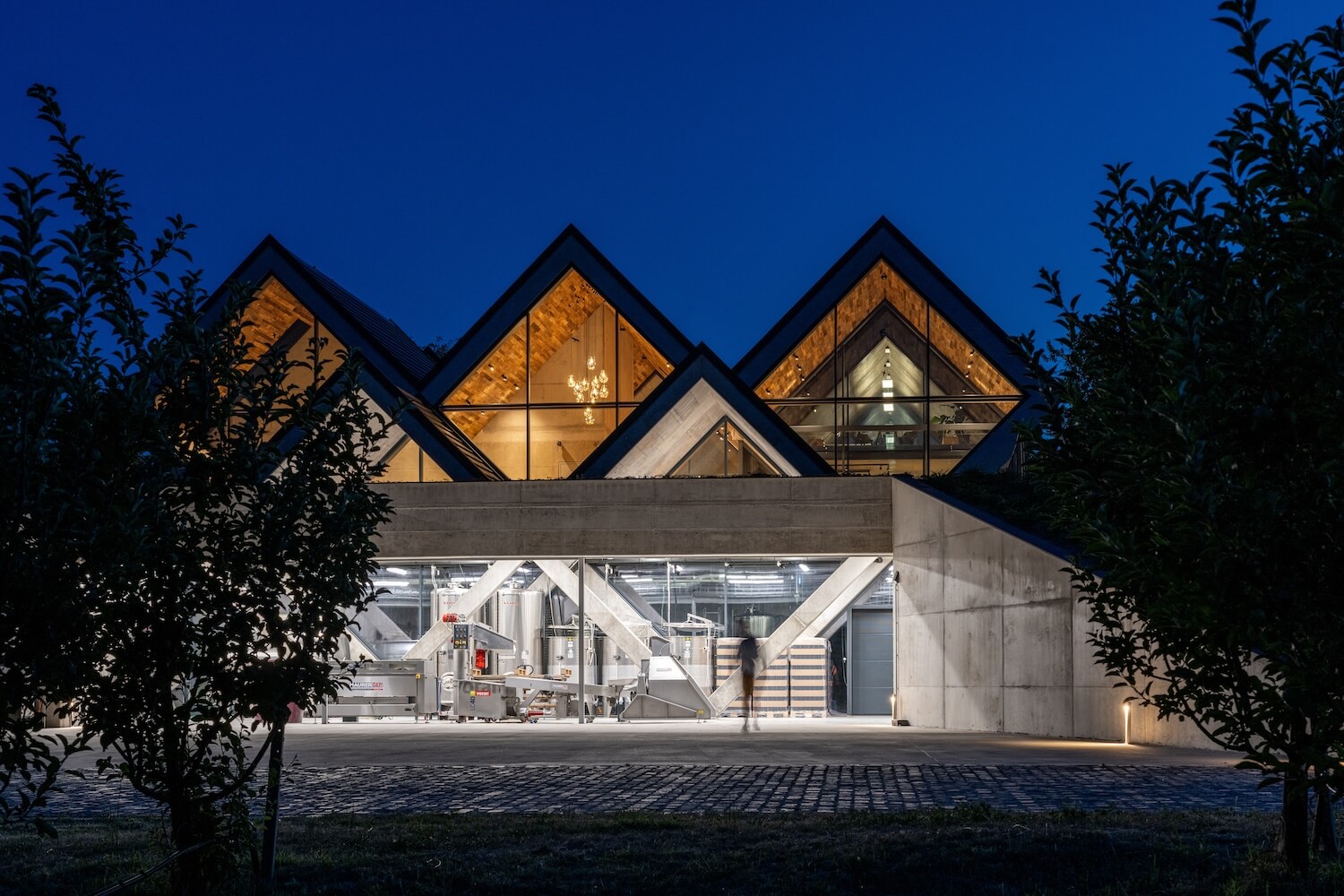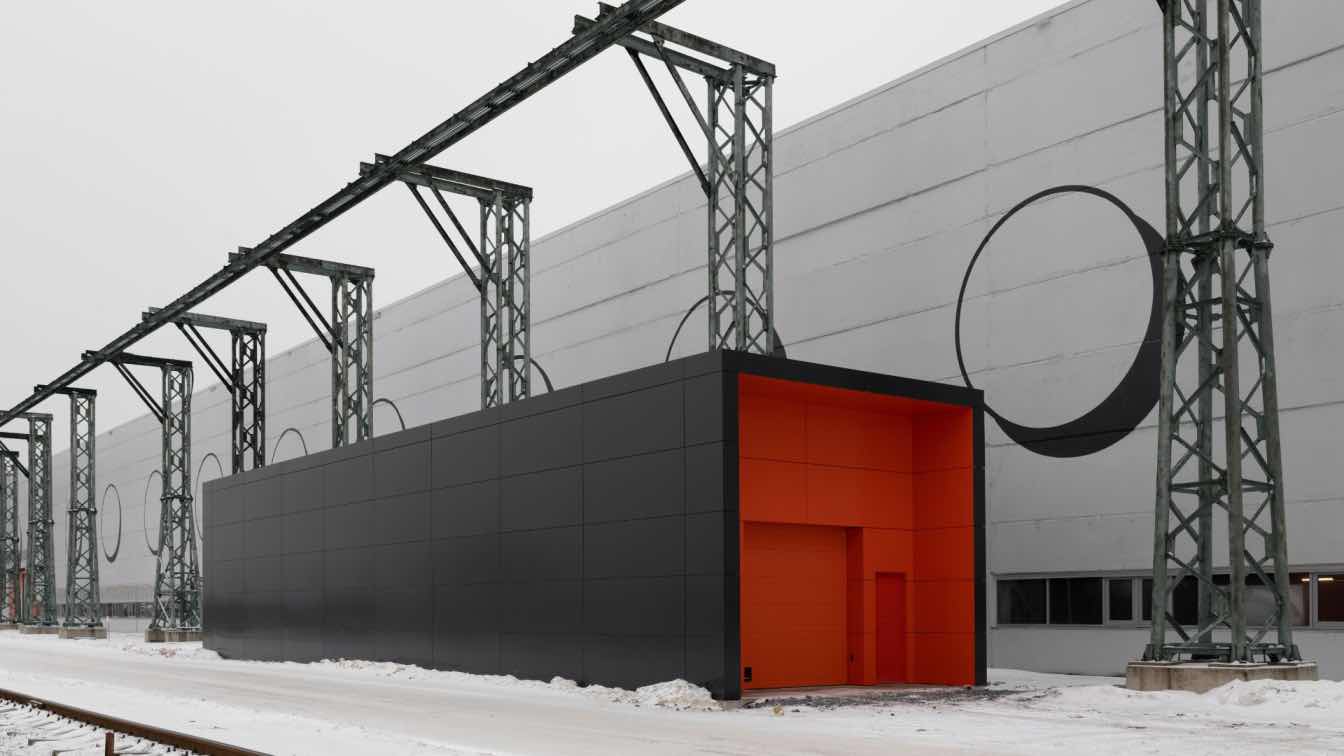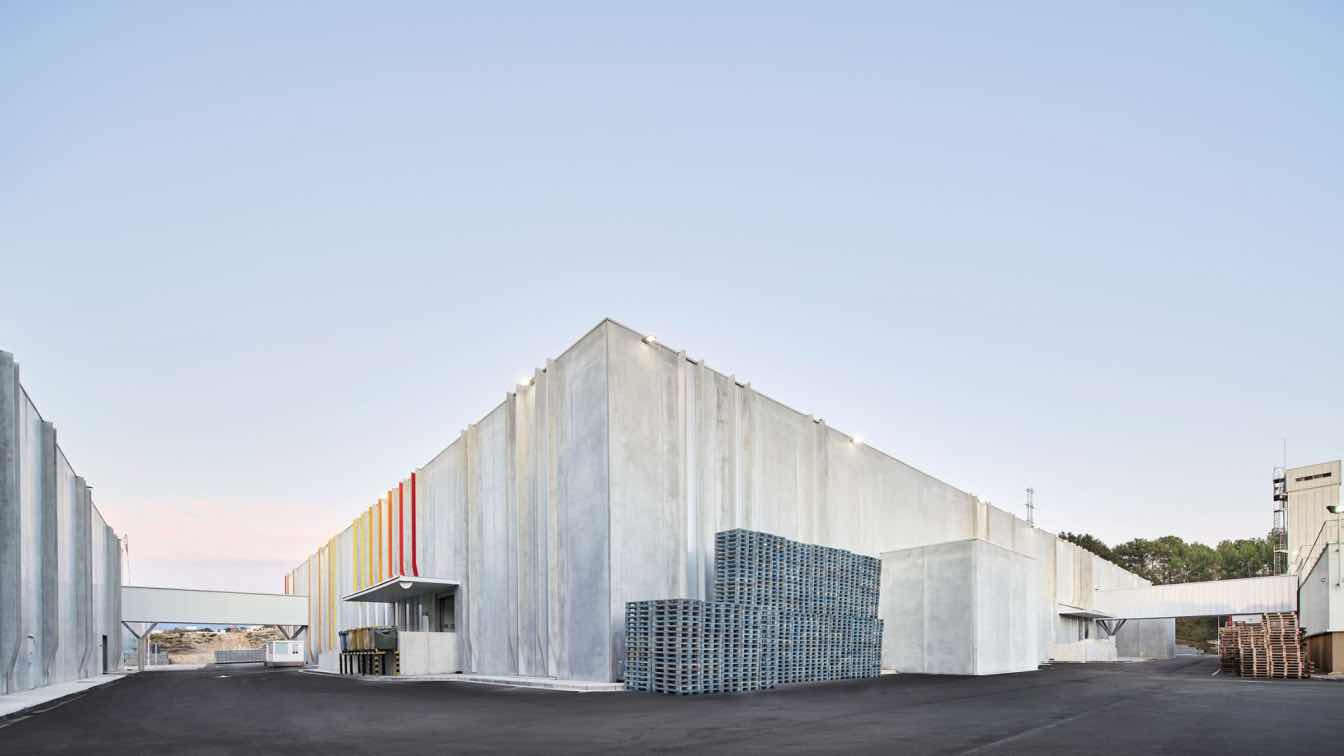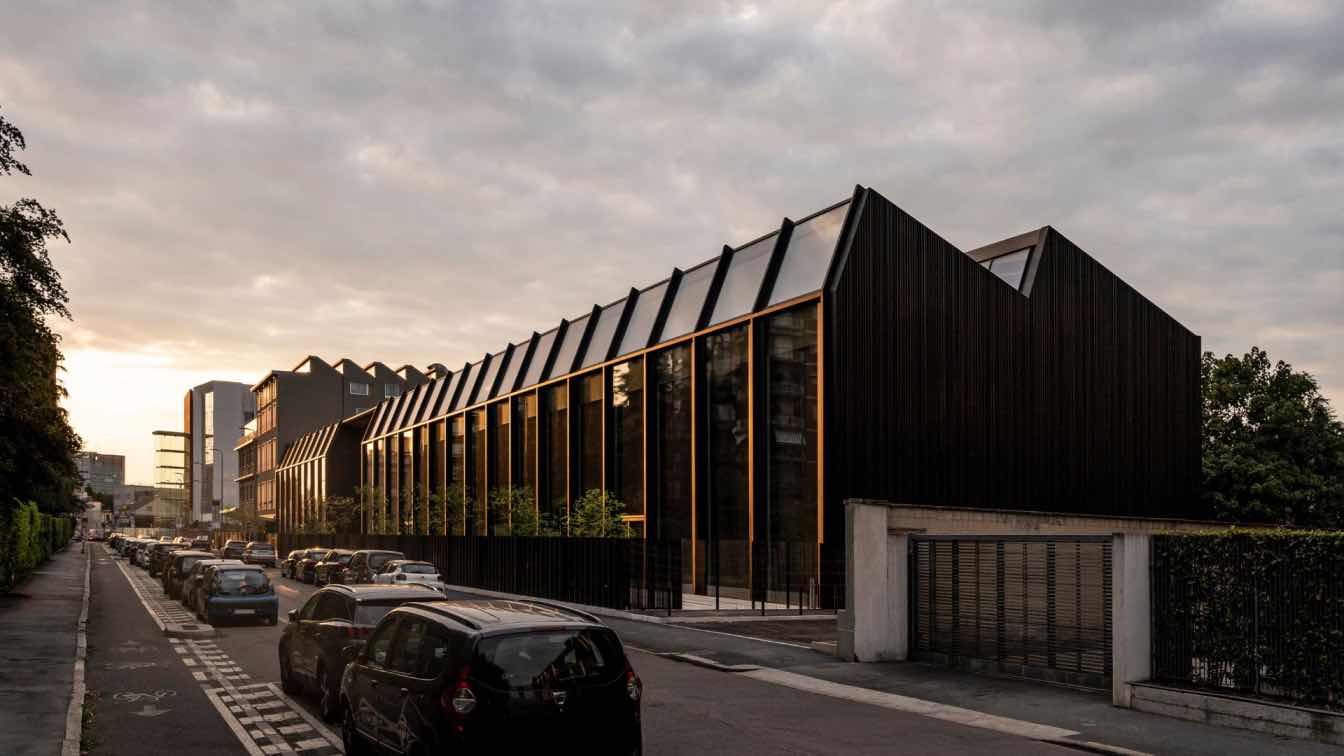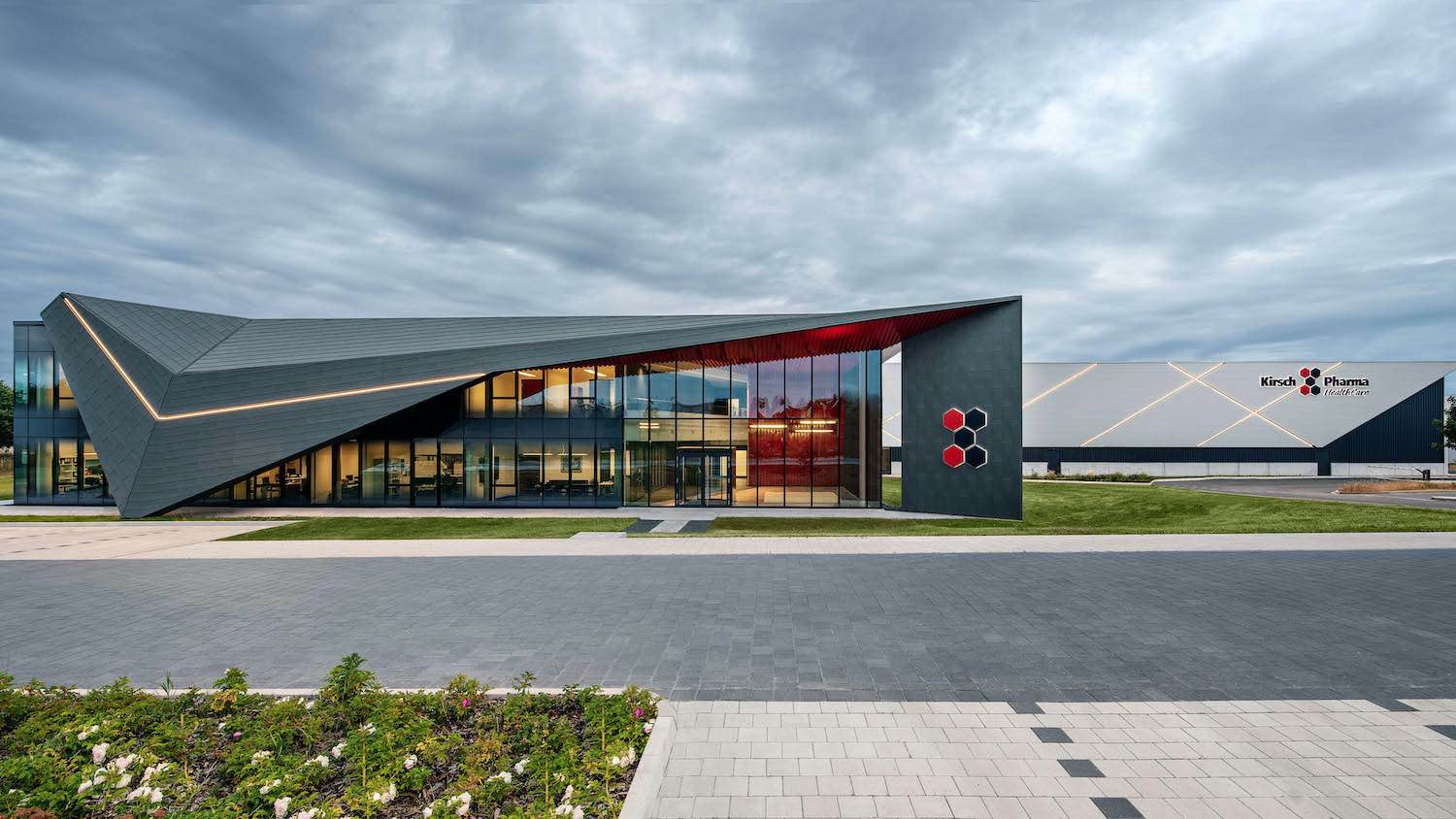BORD Architectural Studio: Apple-matured cider is still a novelty in Hungary, yet its production has a centuries-old tradition in Europe. It encapsulates the essence of autumn, the golden rays of the sun, the warm colours and scents of leaves and fruits. Our architectural vision is deeply inspired by nature and intends to capture this kind of atmosphere.
BudaPrés Cider Manor is located in Etyek, which is commonly referred to as the vineyard of Buda. It is positioned on the Öreghegy (Old hill), where numerous renowned wineries thrive. However, on this approximately 1-hectare plot, instead of grapevines, rows of apple trees flourish. A father and son, both passionate wine enthusiasts, embarked on a family venture to establish an apple orchard and a cider production facility. They carefully craft a low-alcohol beverage fermenting apple juice, where the dominant flavour is not sugar but rather the genuine taste of apples.
Their goal was to create a spacious processing facility equipped with all necessities for the production of this elegant and sophisticated Hungarian apple cider.The cycle of nature reaches its fullness in autumn with the ripening of fruits. Rich colours, aromas, and textures surround us, the warmth of a tartan plaid wool sweater, the communal experience of harvest under the open sky - all these are the essence of cider. In the architectural concept, inspired by the unique geometry of Scottish plaid, the traditional high-pitched roof form transforms, giving rise to a new spatial appearance.
The traditional 45-degree gable roof geometry was mirrored horizontally for determining the fundamental unit of the building mass. This basic unit was then shifted both horizontally and vertically and arranged in sequence to form the final building mass. It was situated parallel to the slope axis on the north-eastern part of the sloped plot, partially sunk into the ground. The rhombus-shaped "tunnels" at both ends are enclosed with glass walls, thus establishing a connection with the apple trees in the garden and the surrounding landscape.

The building houses various purpose-designed spaces on three levels, logically separated. Below ground level, a hall-sized space hosts the operational areas, accessible from a courtyard on the slope side. This is where fruit processing and fermentation take place. Above this, there is the service level, which includes guest areas, a bar, a reception, and a showroom, offering a panoramic view. The reinforced concrete structure enables the exciting visual connections of spaces without ceilings and walls. From the guest area, there is a view into the courtyard, the barrels and bottles are also visible, and we can catch a glimpse of the garden and the open sky as well. Various-sized, shaped, and high-ceilinged spaces merge into one another while showcasing the unique geometry.
On the top level, in the "attic space" of the redefined gable roof, offices, service, operational, and mechanical spaces are located. The playful surfaces of the translucent volumes create a unique visual effect when illuminated at night, enhancing the building's unique appearance. The materials defining the external appearance include rectangular anthracite ceramic tiles, standing-seam metal sheet roofing, plastered surfaces, aluminium doors and windows and curtain walls, along with the occasional metallic sheen of modern technology. The interior design also adheres to the architectural concept.
In the industrial spaces functional aspects take centre stage, with visible raw technology, concrete structural elements and resin floors. In the guest areas and offices, fair faced concrete, wood, aluminium, and glass are the predominant materials. Rustic wooden cladding mounted on a double batten framework was used on the sloping ceiling soffits. The claddings are recycled from structural elements of agricultural buildings that were to be demolished. The Swedish floor and custom wood panelling integrated into the geometry create a warm atmosphere in the interior spaces.




























































